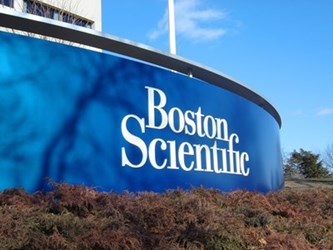Study: Watchman More Cost-Effective Than Warfarin, Long-Term

Mount Sinai Research has demonstrated that Boston Scientific’s Watchman Left Atrial Appendage Closure Device (LAACD) is a more cost-effective method of reducing stroke than the long-term use of warfarin or non-warfarin anti-coagulants in patients with non-valvular atrial fibrillation (AF). Though their results are based on a calculated model, the researchers hope the findings will encourage wider adoption of the device.
Anti-coagulation therapy is the current standard of care for AF, but it requires careful patient adherence and frequent monitoring to avoid bleeding complications. Because of the risk and the inconvenience of regular blood testing, many patients are unable or unwilling to take anti-coagulant drugs. The Watchman — a device that closes a small cavity in the left atrial wall known to generate stroke-causing clots — was developed as a minimally invasive alternative or complement to long-term pharmaceutical intervention.
Vivek Reddy, director of Cardiac Arrhythmia Services for Mount Sinai Hospital and Health System, led a study that analyzed the long-term efficacy and cost of three approaches to AF therapy: warfarin, four recently FDA-approved anti-coagulant drugs (NAOCs), and the Watchman. Results were published in the Journal of American College of Cardiology (JACC).
“By its very nature, the Watchman device is not subject to patient adherence issues since, once implanted, the device provides lifelong stroke prophylaxis without the risk of complications associated with blood thinners,” said Reddy in a press release. “This is crucial both in improving patient outcomes by reducing disabling strokes, as well as reducing health care costs.”
The researchers’ analysis constructed a model of Medicare beneficiaries over a 20-year period and found that the Watchman achieved cost-effectiveness, relative to warfarin, nine years faster than NOACs. Combining both efficacy and cost savings, Watchman pulled ahead of warfarin in 10 years and NOACs in five, with additional cost savings annually thereafter.
In audio commentary released with the study’s abstract, Valentin Furster, who serves as director to Mount Sinai Heart, stated that Medicare spends $16 billion on AF each year, and nearly half of that expense is attributed to strokes and other costly side effects.
“We’re dealing with pluses and minuses,” said Furster of the three treatment strategies. Because the study was based on projections extrapolated from clinical trials, Furster remarked that more research was required before Watchman was definitively declared “best investment,” but added that these initial findings may encourage wider adoption of the implant.
The Watchman — available in markets worldwide since 2009 — only obtained FDA clearance last March, and its approval was contingent on further clinical studies comparing the device to existing therapies. The Centers for Medicare and Medicaid Services (CMS) has proposed that they will only cover the Watchman if patients are enrolled in an approved clinical study of similar LAAC devices.
Boston Scientific has already received CE Mark approval for its next-generation LAAC device, Watchman FLX. Meanwhile, St. Jude Medical has begun marketing its endocardial LAAC device, the Amplatzer Amulet, in Europe, and J&J’s Biosense recently acquired the LAAC developer of Wavecrest, though the device is still in its developmental stages.
According to Kamram Zamanian and Sean Collins of iData Research, “The increasing prevalence of AF and the penetration rate of more advanced device-based LAA closure procedures are expected to drive growth in the U.S. market for LAA closure devices through the remainder of the decade… The FDA will continue to play an important role in defining the competitive landscape as the market expands.”
